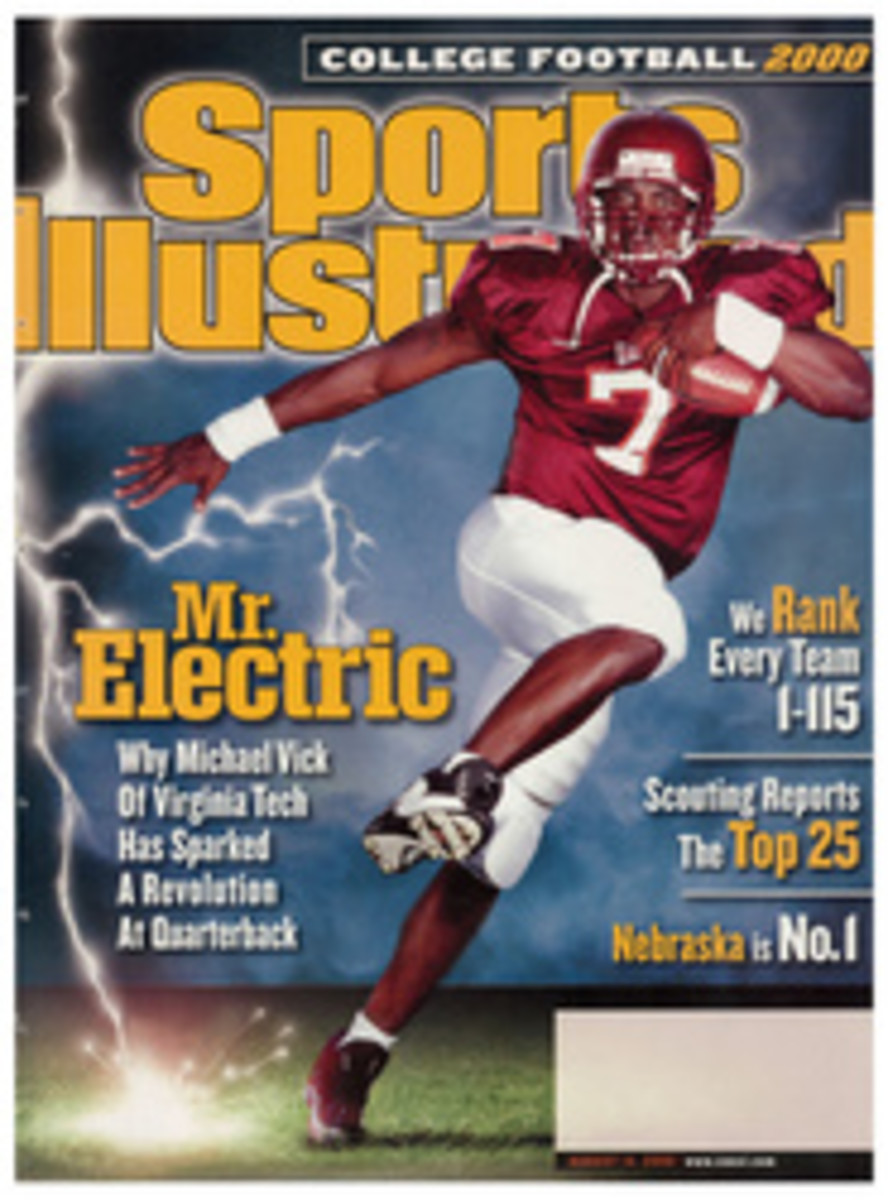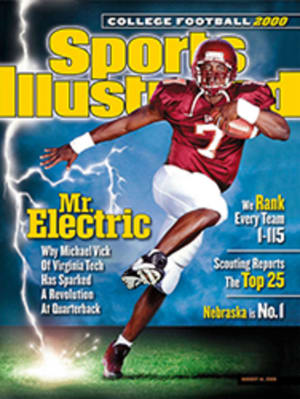
Road Warrior Robert Garside hopes to be the first man to run around the world
I have come up with the idea of running around the world, and
quite by accident. The other day I was in [the] library. The odd
book out on the shelf was a colourful "Guinness Book of Records."
That's what lured me, so I picked it up.
--diary entry of Robert (Runningman) Garside, January 1995, London
In April 1998, Robert Garside, a native of Cheshire, England,
found himself staring at the maggot-infested urinal of his jail
cell in Huzhou, China, about 100 miles west of Shanghai, if only
to avoid eye contact with the other prisoner. As far as he could
tell, he'd been arrested for running in a restricted area. "I had
to hide from the police for three months and run at night
[because I was paranoid], but in the end it was either get caught
or head back into the Himalayas," says Garside, who had a
Chinese-speaking friend negotiate his release after he had served
five days of a 30-day sentence. "They didn't understand who I
was."
Who, exactly, is he? Garside, 33, is an inspiration to all who
have longed to be yoked to nothing but their curiosity. He was
running across China because on Dec. 7, 1996, he had begun a
six-year run around the world from London's Piccadilly Circus. He
plans to cross the U.S. border from Tijuana, Mexico, around
August 15. He has already broken the long-distance running world
record of 11,134 miles, set by Sarah Lovington-Fulcher of the
U.S. in 1988, and by the time he finishes his global run he will
have logged almost four times Lovington-Fulcher's mileage.
Garside was a psychology student at Royal Holloway University in
London when, like so many bored students before him, he sat in a
library wondering what direction his life was taking. "I just
wanted a change," he says. He was already an avid runner who
jogged two hours around campus every day. Whereas
Lovington-Fulcher ran around the perimeter of the U.S. to promote
fitness, Garside's odyssey began as a trivial pursuit. "At first
I thought it would be cool to break a record," he says. "But it's
not about that anymore, because there's too much hard work
involved."
The ordeal, though arduous, is less of a logistical nightmare
than it seems at first glance. The "around the world" route that
the record keepers at Guinness approved for Garside entails
running the length of each continent and flying to the next one.
Garside started from London, crossed the English Channel by ferry
to France, then ran through Europe, across Russia, India and
China, down the length of Japan, across Australia and up South
and Central America. He plans to spend the rest of the year
crossing the U.S. from west to east before tackling Africa, the
Middle East and finally, in the fall of 2001, Antarctica.
Along the way he's been robbed, chased by police and thugs,
threatened with an ax and pelted with stones (which, he points
out, "really hurts"). He avoided Colombia--which was not required
running because he had already traversed the eastern side of
South America--for fear of being kidnapped by leftist guerrillas.
Last month he had to outrun three armed men outside Acapulco.
Earlier, in Russia, he was fired upon by a sniper. "Sometimes you
get an instigator who gets the crowd on his side and tries to
create trouble for me," Garside says. "I don't know why. I guess
people get suspicious of someone just running down the street."
People stare at me alot [sic] and sometimes shout "Ah Gump!" and
then laugh. Ah Gump is a Chinese translation of Forrest Gump.
--March 1998, Tibet
Garside jogs eight hours a day, usually from 9 to 5, during which
he says he covers at least 50 miles on flat ground, fewer in
mountain ranges or jungles. He wears a hip belt with a video
camera attached (for evidence of his record) and a 15-pound
backpack containing clothing, water, a camera, visas, his
passport and a hand-sized computer. When he arrives in
"civilization," he uses a computer to receive E-mail and to
update his Web site, www.runningman.org.
His attire varies with the climate, of course, ranging from a
Himalayan suit made of goose down and Gore-Tex to shorts and a
vest. Amazingly, after 20,000 miles, the 5'11", 154-pound Garside
has yet to sustain an injury. "I should have," he says.
Temperatures over 40[degrees]C most days and I spend most of my
time with bush flies. I turned 32 yesterday and will celebrate
my birthday in Melbourne. Just 300km to go, the soles of my
shoes have fallen off and they smell. I need a new pair.
--January 1999, Horsham, Victoria, Australia
Almost less fathomable than the run itself is the fact that
Garside began it with only about $30 in his pocket. He has stayed
in the homes of police officers and peasant farmers and at
Buddhist monasteries. He has developed relationships with various
benefactors--a London photo agent, a Hong Kong clothing designer,
a Japanese computer supplier--but he still depends largely on the
kindness of Fremden, desconocidos, shiranai hito and etrangers
for a shower, a bite to eat and a roof over his head. "The gift
of gab gets you through, not the money," Garside says.
I slept in a whorse [sic] house. I introduced myself and the
girls laughed and wanted to kiss Mr. Runningman. The room I got
was seedy and I wrapped myself in clothes to avoid touching the
bed. It was humid, dark and mirrored.
--November 1999, Mage, Brazil
A Spanish man whom Garside met in Nepal ran with him and provided
companionship through the 18,000-foot elevations in the
Himalayas. A cyclist and a singing doctor he ran across in
Australia joined him for 600 miles. In France a dog trotted
beside him for 20 miles. His latest companion is more sightly, a
Venezuelan university student whom he met while browsing clothing
racks in a Caracas shopping mall. Endrina (Runningwoman) Perez,
24, plans to join him for the entire run across the U.S. and, he
beams, "hopefully for life thereafter." Garside says Americans
have been vowing to run with him once he crosses the Mexican
border at Tijuana (accompanied by a dozen huapango-strumming
mariachi band members). He guarantees a crowd of "hundreds, maybe
thousands" of sneakered supporters blocking traffic en route from
Philadelphia to New York City, where he plans to run up and down
the steps of the Empire State Building.
Compared to what Garside has already done and still plans to do,
running across the U.S. will be a walk in the park. Afterward
come the wars and plagues of central Africa, the dry heat of the
Sahara and, eventually, Antarctica. He plans to use special ski
shoes to glide along the continent's icy surface, and he'll tug
behind him an aerodynamic egg-shaped capsule to store food and
sleep in. "I'm going to do it," he says, attempting to convince
himself as much as his interlocutor. "I'd rather do Antarctica
than Colombia, because if I don't make it, at least I will have
died doing something great and not in the hands of some
guerrilla."
What do I say if I'm stopped (Er, hello, uh, what's up dude?
Might I add what a fine looking narco-trafficker you are)?
--April 2000, at the Colombia/Venezuela border
Antarctica or no, Garside wants to start a line of running wear
(30% of whose proceeds will go to charity), write a book about
the trip, and start a "model village" in India "where people can
live without dying of dirty water or food all the time." At this
point no dream of his seems unreasonable to him, though one
wonders where he'll find the time to accomplish his goals: He
plans on circumnavigating the globe twice more. The Runningman
won't reveal his future modes of transport, lest someone steal
his idea, but he says one circumnavigation will be by air and the
other by sea, both will use his legs and neither will involve an
engine or boat.
"I really didn't know anything about the world until I started
running around it," Garside says. "It's like the time-travel show
Quantum Leap, but instead of jumping I'm running from one
experience to the next."
TWO COLOR PHOTOS: ROBERT GARSIDE/FSP Monumental trek Since 1996 Garside's trip has taken him past Sydney Harbor and the Taj Mahal, among other notable sites.
TWO COLOR PHOTOS: ROBERT GARSIDE/FSP Religious running In 1997 Garside strode through Red Square and a year later found himself before the Dalai Lama's former palace.
"I thought it would be cool to break a record, but it's not
about that anymore because it's too much hard work."

